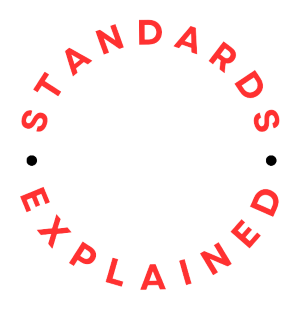ISO 45001:2018 Occupational health and safety management systems — Requirements with guidance for use is an international standard that provides guidelines and requirements for occupational health and safety management. It provides a framework for organizations to manage risks and improve OH&S performance.
The standard establishes criteria for an OH&S policy, objectives, planning, implementation, operation, auditing and review. Key elements include leadership commitment, worker participation, hazard identification and risk assessment, legal and regulatory compliance, emergency planning, incident investigation, and continual improvement. It applies to organizations of all sizes and can be integrated with other ISO management system standards.
Note that the standard was reviewed and confirmed in 2022; therefore, this version remains current.
What does it cover?
| Introduction |
| 1 Scope |
| 2 Normative references |
| 3 Terms and definitions |
| 4 Context of the organization |
| 4.1 Understanding the organization and its context |
| 4.2 Understanding the needs and expectations of workers and other interested parties |
| 4.3 Determining the scope of the OH&S management system |
| 4.4 OH&S management system |
| 5 Leadership and worker participation |
| 5.1 Leadership and commitment |
| 5.2 OH&S policy |
| 5.3 Organizational roles, responsibilities and authorities |
| 5.4 Consultation and participation of workers |
| 6 Planning |
| 6.1 Actions to address risks and opportunities |
| 6.2 OH&S objectives and planning to achieve them |
| 7 Support |
| 7.1 Resources |
| 7.2 Competence |
| 7.3 Awareness |
| 7.4 Communication |
| 7.5 Documented information |
| 8 Operation |
| 8.1 Operational planning and control |
| 8.2 Emergency preparedness and response |
| 9 Performance evaluation |
| 9.1 Monitoring, measurement, analysis and performance evaluation |
| 9.2 Internal audit |
| 9.3 Management review |
| 10 Improvement |
| 10.1 General |
| 10.2 Incident, nonconformity and corrective action |
| 10.3 Continual improvement |
| Annex A Guidance on the use of this document |
| A.1 General |
| A.2 Normative references |
| A.3 Terms and definitions |
| A.4 Context of the organization |
| A.5 Leadership and worker participation |
| A.6 Planning |
| A.7 Support |
| A.8 Operation |
| A.9 Performance evaluation |
| A.10 Improvement |
Implementing ISO 45001
Implementing an Occupational Health and Safety Management System (OHSMS) in conformity with ISO 45001 involves establishing a systematic approach to identify, assess, and control health and safety risks in the workplace. These are the steps involved.
1. Leadership and Commitment
- Gain commitment from top management to implement and support the OHSMS in accordance with ISO 45001.
- Appoint a Health and Safety Manager or Coordinator to lead the implementation efforts.
2. Scope Determination
- Determine the scope of your OHSMS, including the activities, locations, and personnel that will be covered by conformity with the requirements of ISO 45001.
3. OHS Policy and Objectives
- Develop an occupational health and safety policy that reflects your organization’s commitment to protecting the health and safety of employees and others.
- Set specific and measurable OHS objectives that align with your organization’s goals and the policy.
4. Hazard Identification and Risk Assessment
- Identify workplace hazards, including physical, chemical, biological, ergonomic, and psychosocial factors.
- Assess the risks associated with each hazard to determine their significance and impact.
5. Legal and Regulatory Compliance
Ensure that your organization is aware of and complies with all applicable health and safety laws, regulations, and standards.
6. Risk Control and Prevention
- Develop controls and measures to eliminate or minimize identified risks.
- Establish safe work procedures, safety guidelines, and emergency response plans.
7. Training and Competence
- Provide health and safety training to all employees, contractors, and relevant personnel.
- Ensure that employees have the necessary skills and knowledge to perform their jobs safely.
8. Consultation and Participation
- Establish mechanisms for involving employees and their representatives in health and safety decision-making.
- Encourage employee involvement in hazard identification and risk assessments.
9. Incident Reporting and Investigation
- Develop procedures for reporting and investigating occupational incidents, accidents, and near misses.
- Implement corrective and preventive actions to prevent recurrence.
10. Emergency Preparedness and Response
- Develop emergency response plans and conduct drills and exercises to ensure readiness.
- Establish communication protocols for emergencies.
11. Performance Monitoring and Measurement
- Define Key Performance Indicators (KPIs) and metrics to assess the effectiveness of the OHSMS.
- Implement monitoring and reporting systems.
12. Auditing and Review
- Conduct regular internal audits to assess the conformity and effectiveness of your OHSMS.
- Review the OHSMS periodically to ensure its continued suitability, adequacy, and effectiveness.
13. Management Review
Hold periodic management reviews to evaluate the performance of the OHSMS and identify areas for improvement.
14. Continual Improvement
- Foster a culture of continual improvement by encouraging employees to suggest and implement enhancements to health and safety practices.
- Use the Plan-Do-Check-Act (PDCA) cycle for continual improvement.
15. External Audit and Certification
Engage with a certification body to perform an external audit to assess your OHSMS’s conformity with ISO 45001 standards.
16. Certification and Maintenance
- After successfully passing the certification audit, your organization will be granted ISO 45001 certification.
- Maintain and continually improve the OHSMS to ensure ongoing conformity.
Some further words of advice…
It is essential to recognize that conformity with ISO 45001 is an ongoing process. Organizations should continually assess the effectiveness of their health and safety measures, adapt to changing risks and regulations, and actively promote a safe and healthy work environment. Regularly review and update your OHSMS policies, objectives, and procedures to ensure they remain relevant and effective.
ISO 45001 can be purchased through the ISO.org website.














Comments (0)